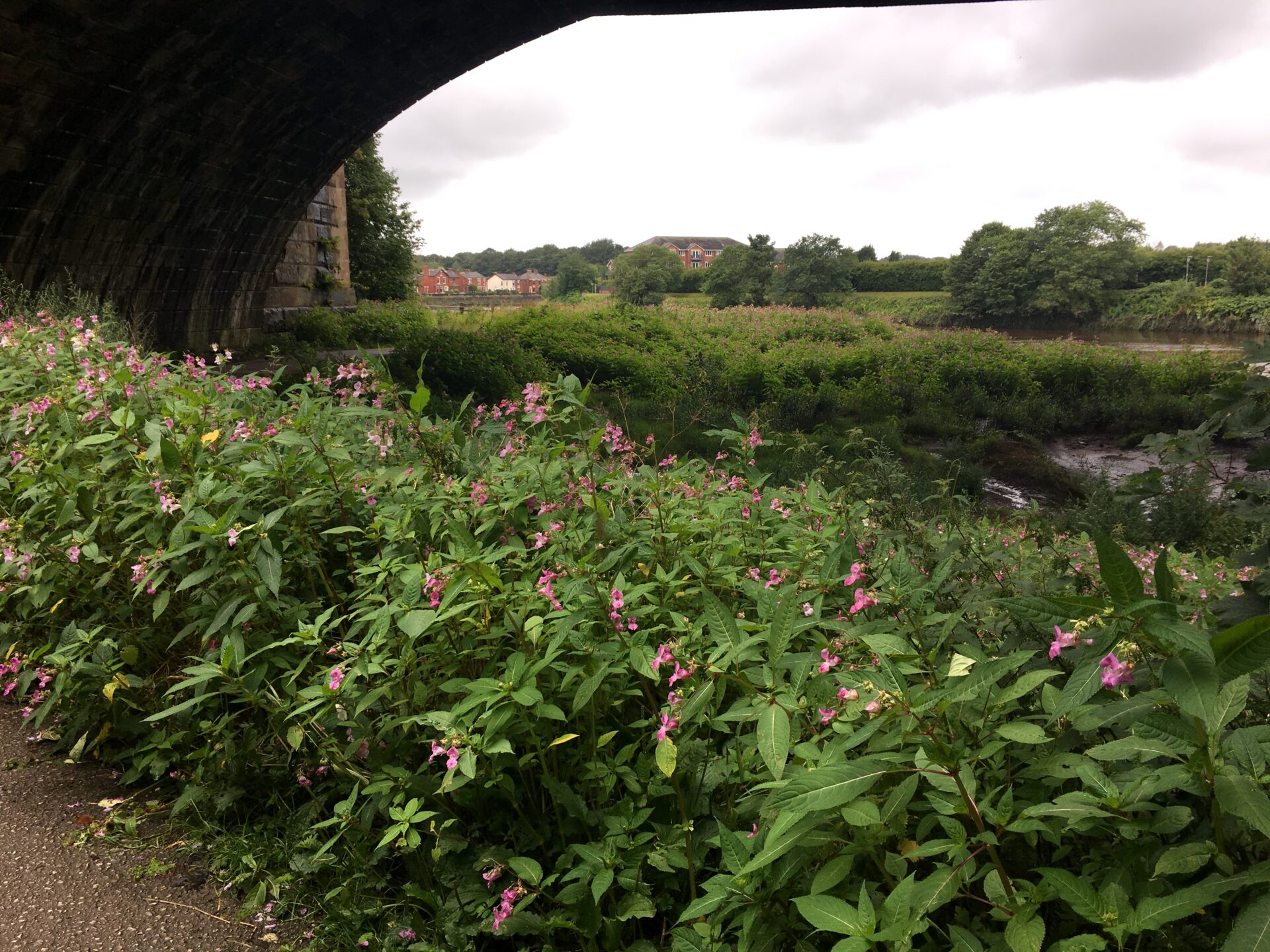
Pictured: Himalayan Balsam
Invasive Non Native Species (INNS) are any non native animal or plants and they can cause significant damage to our environment. They affect the quality of freshwater, including water in our rivers, can clog up water systems and increase flood risk.
- Dealing with established invasive species costs the UK 1.7billion each year
- Most INNs are spread by human activity.
- 70% of English water bodies are at risk of deterioration by invasive non native species
Rather than focusing on treating INNS – prevention needs to be the aim of our strategy for slowing down their spread by focusing on biosecurity.
In Defra’s Water Framework Directive, INNS are ranked alongside the top pressures affecting the water quality in England and prevent our rivers from achieving a ‘good’ rating.
There are over 20,000 different kinds of INNS which can destroy native species. Some of the better known types are the Signal Crayfish, Zebra mussels, Japanese Knotweed – which is so difficult to dispose of that if it’s found in gardens it can affect a buyer’s ability to get a mortgage for the property, giant hogweed which can burn your skin if you touch it. INNS can burrow into riverbanks destabilising them or mobilise sediment.
Following biosecurity best practice is the only way to stop the spread. INNS can be spread accidently, for example on your clothing or vehicles. Plant seeds can attach to your clothes and they can be diffused through soil. Anglers as they move their kit from catchment to catchment and people using canoes or kyaks can so easily spread INNS. They can also be spread inadvertently by contractors or just people using footpaths near contaminated areas.
Check, Clean and Dry is the message from a Government campaign used to tackle the spread of INNS by offering advice to anglers, boaters and paddlers on how to minimise risk. They can avoid transferring species on their kit by cleaning it before leaving a site so that all potential stowaways are left behind.
One problem is that INNS can live for a long time – up to 16 days – in damp conditions. Immersing your equipment in hot water kills them and then the advice is to hang it up to dry.
Free e-learning
Professor Alison Dunn, from University of Leeds, has worked with the GB Non-Native Species Secretariat
to put together a new e learning course based on research into how to slow the spread of INNS.
It has just gone live and is an excellent resource, but not as widely known about as it could be.
The training is freely available on their website and is aimed in particular at environmental researchers who do fieldwork or anyone taking part in citizen science.
It covers why biosecurity is important, identifies INNS and their ecological impact and best practice to prevent spread.
You just need to register for the course which takes less than an hour and on completion you get a certificate. https://bit.ly/3YJlKna There is also other free biosecurity learning packages on the website aimed at contractors.
Biosecurity guides
Professor Dunn also led an iCASP project to which involved working with Local Authorities and partners to improve the uptake of good biosecurity practice. Easy to use, evidence-based biosecurity guides and materials have been produced during the project which are tailored to land users and contractors. These will help identify high risk activities, hotspots and target biosecurity and resources in a cost-effective way.
